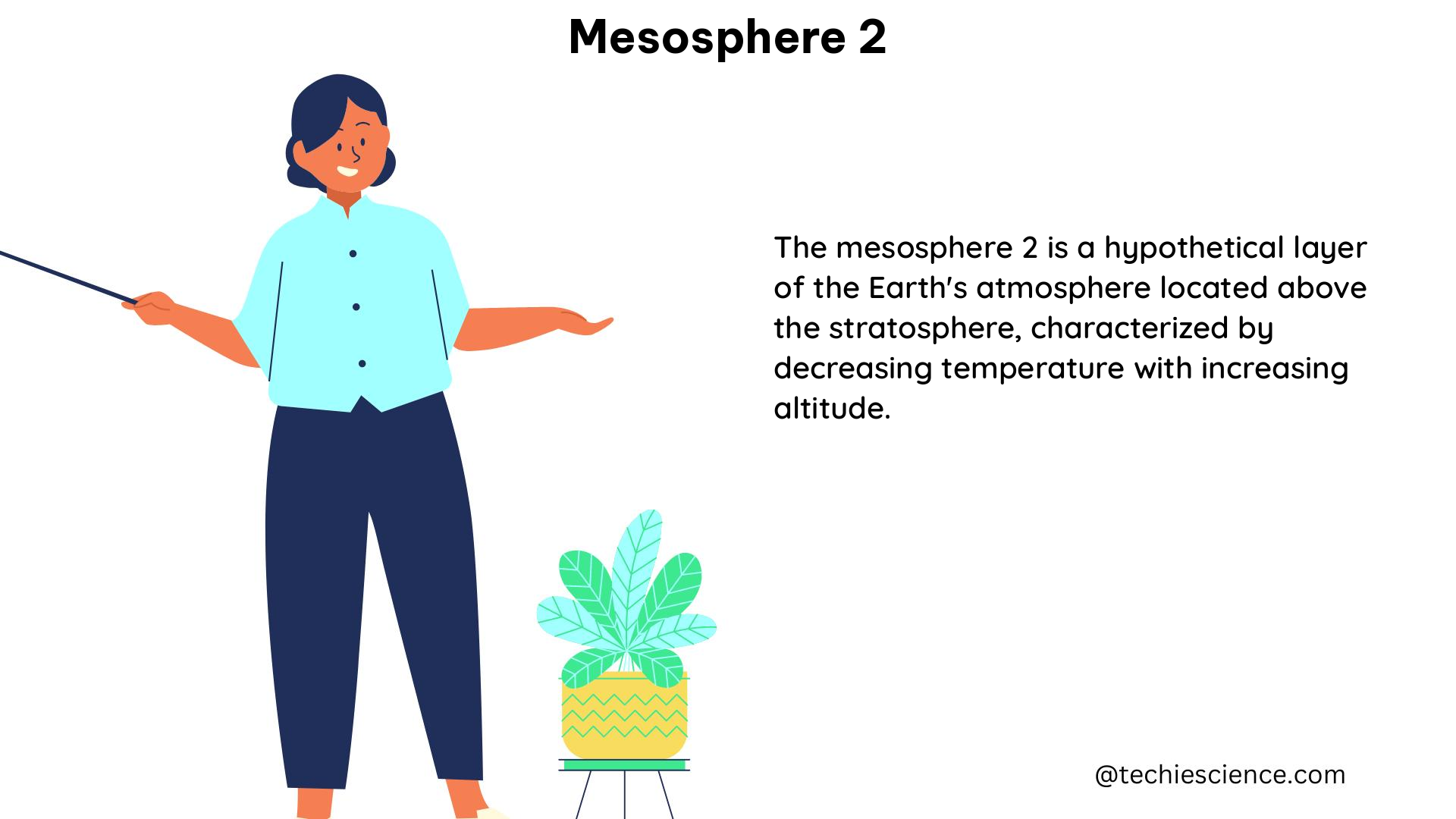The mesosphere is a captivating layer of Earth’s atmosphere, extending from approximately 50 to 85 kilometers above the surface. As the third highest layer, it plays a crucial role in the complex dynamics of our planet’s atmospheric system. In this comprehensive guide, we will delve into the intricacies of the mesosphere, exploring its characteristics, the latest research findings, and the technical specifications for a DIY mesosphere measurement system.
Characteristics of the Mesosphere
The mesosphere is characterized by a unique temperature profile, where the temperature decreases with increasing altitude. This temperature gradient is a result of the absorption of solar radiation by ozone (O₃) in the underlying stratosphere. At the upper boundary of the mesosphere, temperatures can plummet as low as -100°C, making it one of the coldest regions on Earth.
The mesosphere is also home to a variety of atmospheric phenomena, including:
- Noctilucent Clouds: These rare, high-altitude clouds form in the upper mesosphere and are composed of ice crystals. They are typically observed at high latitudes during the summer months.
- Polar Mesospheric Clouds: Also known as “silver clouds,” these clouds form in the polar regions of the mesosphere and are composed of ice crystals.
- Meteor Showers: The mesosphere is the region where many meteors burn up as they enter the Earth’s atmosphere, creating spectacular meteor showers.
Density Trends in the Mesosphere

One of the key aspects of the mesosphere that has been the focus of recent research is the long-term density trends. A study published in the Journal of Geophysical Research: Space Physics examined the density trends in the Earth’s upper atmosphere, specifically at altitudes between 71 and 116 kilometers.
The study found that the density trends vary with both altitude and latitude. Some regions within the mesosphere have shown significant decreases in density over the past few decades, while other areas have remained relatively stable. These findings have important implications for our understanding of the mesosphere’s response to various atmospheric and climate-related processes.
Mesosphere Wind Measurements
Accurately measuring wind patterns in the mesosphere is crucial for understanding its complex dynamics. A study published in the journal Atmosphere simulated mesosphere wind measurements using multiple emission lines of the O₂(0-1) band and a space-based Doppler technique.
The researchers found that the O₂(0-1) band is a promising target for mesosphere wind measurements, as it provides a high signal-to-noise ratio and a relatively simple radiation characteristic. They also developed a forward model to simulate the raw interferogram and evaluate the measurement error, which can help in the design and optimization of future mesosphere wind measurement systems.
Technical Specifications for a DIY Mesosphere Measurement System
Studying the mesosphere directly can be challenging due to its inaccessibility and harsh environmental conditions. However, researchers have developed various techniques and systems to measure the properties of this atmospheric layer.
One such system is a mobile Rayleigh Doppler lidar, which was used in a study for wind and temperature measurements in the stratosphere and lower mesosphere. The system consists of the following key components:
- Transmitter: The transmitter emits a laser beam at a wavelength of 355 nanometers (nm).
- Receiver: The receiver detects the backscattered light from atmospheric molecules.
- Data Acquisition System: The data acquisition system records the Doppler shift of the backscattered light, which is then used to calculate the wind speed and direction.
The technical specifications of this DIY mesosphere measurement system highlight the precision and sophistication required to study this challenging atmospheric layer. By understanding the characteristics of the mesosphere and the tools used to investigate it, researchers can continue to unravel the mysteries of this unique region of the Earth’s atmosphere.
Conclusion
The mesosphere is a captivating and complex layer of Earth’s atmosphere, with a wealth of fascinating phenomena and intriguing research questions. Through the use of remote sensing, modeling, and specialized measurement systems, scientists have made significant strides in understanding the long-term density trends, wind patterns, and other key aspects of this atmospheric layer.
As we continue to explore and study the mesosphere, the insights gained will not only deepen our knowledge of atmospheric science but also have practical applications in areas such as weather forecasting, climate modeling, and space exploration. By delving into the technical details and the latest research findings, we can better appreciate the challenges and the importance of understanding this critical region of our planet’s atmosphere.
References:
- Long‐Term Density Trend in the Mesosphere and Lower Thermosphere Based on Atmospheric Occultations, https://agupubs.onlinelibrary.wiley.com/doi/full/10.1029/2022JA030797
- Mesosphere – an overview, https://www.sciencedirect.com/topics/chemistry/mesosphere
- Simulation of Mesosphere Wind Measurement with Multiple Emission Lines of the O2(0-1) Band Using Space-Based Doppler, https://www.mdpi.com/2073-4433/13/8/1309
- The Mesosphere, https://scied.ucar.edu/learning-zone/atmosphere/mesosphere
- Long-term changes in the mesosphere calculated by a two-dimensional model, https://pure.mpg.de/rest/items/item_994947_4/component/file_994946/content

The lambdageeks.com Core SME Team is a group of experienced subject matter experts from diverse scientific and technical fields including Physics, Chemistry, Technology,Electronics & Electrical Engineering, Automotive, Mechanical Engineering. Our team collaborates to create high-quality, well-researched articles on a wide range of science and technology topics for the lambdageeks.com website.
All Our Senior SME are having more than 7 Years of experience in the respective fields . They are either Working Industry Professionals or assocaited With different Universities. Refer Our Authors Page to get to know About our Core SMEs.